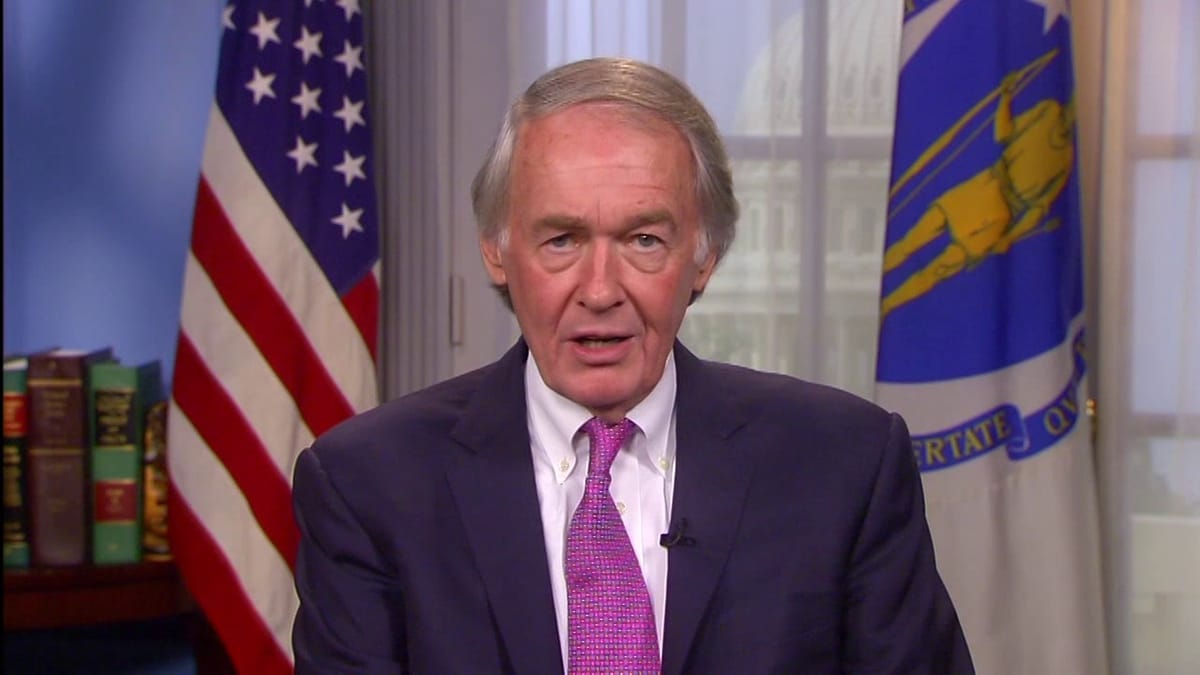Sen. Ed Markey Demands Answers from Facebook, Telia Carrier Reports, Google Maps Shows Vaccine Sites
January 27, 2021—Senator Edward Markey, D-Massachusetts, a member of the Commerce, Science, and Transportation Committee, sent a letter Tuesday to Facebook CEO Mark Zuckerberg. The letter pressed Zuckerberg to explain why Facebook continues to allow controversial political groups to be recommended t
Derek Shumway

January 27, 2021—Senator Edward Markey, D-Massachusetts, a member of the Commerce, Science, and Transportation Committee, sent a letter Tuesday to Facebook CEO Mark Zuckerberg.
The letter pressed Zuckerberg to explain why Facebook continues to allow controversial political groups to be recommended to users. “Users organize and coordinate violent and anti-democratic efforts on these pages, but Facebook does not just allow these dangerous places to exist on its platform, it recommends them to users,” writes Senator Markey in his letter to Zuckerberg.
Zuckerberg had previously responded to Senator Markey over the same issue at a hearing before the Committee on October 28, 2020, saying Facebook no longer recommended political groups. Since the hearing, media reports have said Facebook continues to recommend political groups that promote violence, including targeting elected officials.
“Unfortunately, it appears that Facebook has failed to keep commitments on this topic that you made to me, other members of Congress, and your users,” Markey said in the conclusion of the letter. Senator Markey requested a thorough explanation of Facebook’s commitments and practices, as well as clear steps the company will take to prevent political groups from being recommended to users. Markey requested these answers in writing by February 9.
On January 6, 2021, the U.S. Capitol was overrun with violence leading to an unprecedented insurrection. New reports have indicated some Facebook users created group pages to organize the violent, anti-democratic efforts, related to the insurrection. Even Facebook itself revealed in its own research that the platform’s recommendation tools are responsible for 64 percent of all extremist group joins.
What Europe’s broadband industry learned from COVID-19
The broadband industry was given a test like never before taken in 2020, as the COVID-19 pandemic disrupted virtually all aspects of life. As entire countries shut down, forcing school and work to go digital, network operators, carriers and suppliers were flooded with a demand that looked unlike anything they had ever seen.
Telia Carrier, a provider of telecommunication services based in Solna, Sweden, reported overall traffic volume rising by around 50 percent during March because of pandemic-driven shifts in network usage. Peak traffic levels increased about 35 percent in certain countries and regions. Over a matter of days, traffic for videoconferencing suppliers grew over 400 percent.
In previous years, Telia reported that traffic generally followed a weekly seasonal pattern where the highest load on the network per continent was Sunday evenings. In March 2020, every day looked like Sunday – with more traffic and a wider peak.
“Normal” office hours caused the largest traffic increases. European evening peak traffic, eventually blending with U.S. afternoon traffic increases, had global effects on each other as international audiences engaged online. Everyone was online working, streaming or staying in touch through some form of social media. The pandemic proved that networks need to be automated, scalable, and diverse, all while keeping up with capacity.
Telia said its priorities to fulfill ongoing and future business needs requires massive diversity and redundancy. As 5G mobile technology is deployed, there will be an exploding number of services relying on its connectivity, such as the internet of things, virtual reality, artificial reality, gaming, and other cloud offerings. Billions more devices will require increased automation and intelligence.
On the supply side, COVID-19 reminded suppliers to ensure they had both diverse networks and diverse supply chains. During times of uncertainty, it is dangerous to rely solely on a single vendor. Service providers need a better understanding of vendors’ supply chains. Having diversity down to a component level ensures the ability to meet unpredictable demands on capacity in the future.
Google Maps will soon display COVID-19 vaccination sites
Soon, netizens will be able to use Google Maps to find locations that administer COVID-19 vaccinations. Google announced Monday it is planning on rolling out the new feature to its Google Maps service in four states: Arizona, Louisiana, Mississippi, and Texas.
Searches for “vaccines near me” have increased fivefold since the beginning of the year, and Google is trying to “provide locally relevant answers.” The search results will be shown in designated information panels. They will include details about whether an appointment is required, if the vaccine is only available to certain groups, and if there is a drive-thru. Google said it’s working with “authoritative sources” for the information, including local governments and retail pharmacies.
Information about vaccine sites will roll out to other states and countries later. Adding these features will help reduce rampant confusion about the vaccine. In a survey from the Kaiser Family Foundation, 60 percent of Americans don’t know where or if they can even get it.
Vaccine availability problems in the United States have also been exacerbated by President Joe Biden, who has urged patience in the rollout process. President Biden has set a goal to deliver 100 million doses of the vaccine in his first 100 days in office. Adding the ability to better inform its users about the pandemic, in September last year, Google Maps began displaying seven-day averages of new COVID-19 cases per 100,000 people.











Member discussion